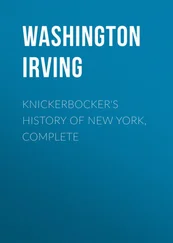And now I am going to tell a fact, which I doubt much my readers will hesitate to believe; but if they do, they are welcome not to believe a word in this whole history—for nothing which it contains is more true. It must be known then that the nose of Antony the Trumpeter was of a very lusty size, strutting boldly from his countenance like a mountain of Golconda, being sumptuously bedecked with rubies and other precious stones, the true regalia of a king of good fellows, which jolly Bacchus grants to all who bouse it heartily at the flagon. Now thus it happened, that bright and early in the morning, the good Antony, having washed his burly visage, was leaning over the quarter–railing of the galley, contemplating it in the glassy wave below. Just at this moment the illustrious sun, breaking in all his splendor from behind a high bluff of the Highlands, did dart one of his most potent beams full upon the refulgent nose of the sounder of brass; the reflection of which shot straightway down, hissing hot, into the water, and killed a mighty sturgeon that was sporting beside the vessel! This huge monster being with infinite labor hoisted on board, furnished a luxurious repast to all the crew, being accounted of excellent flavor, excepting about the wound, where it smacked a little of brimstone; and this, on my veracity, was the first time that ever sturgeon was eaten in those parts by Christian people. [49]
When this astonishing miracle came to be made known to Peter Stuyvesant, and that he tasted of the unknown fish, he, as may well be supposed, marveled exceedingly: and as a monument thereof, he gave the name of Antony's Nose to a stout promontory in the neighborhood; and it has continued to be called Antony's Nose ever since that time.
But hold, whither am I wandering? By the mass, if I attempt to accompany the good Peter Stuyvesant on this voyage, I shall never make an end; for never was there a voyage so fraught with marvelous incidents, nor a river so abounding with transcendent beauties, worthy of being severally recorded. Even now I have it on the point of my pen to relate how his crew were most horribly frightened, on going on shore above the Highlands, by a gang of merry roistering devils, frisking and curveting on a flat rock, which projected into the river, and which is called the Duyvel's Dans–Kamer to this very day. But no! Diedrich Knickerbocker, it becomes thee not to idle thus in thy historic wayfaring.
Recollect, that while dwelling with the fond garrulity of age over these fairy scenes, endeared to thee by the recollections of thy youth, and the charms of a thousand legendary tales, which beguiled the simple ear of thy childhood—recollect that thou art trifling with those fleeting moments which should be devoted to loftier themes. Is not Time, relentless Time! shaking, with palsied hand, his almost exhausted hour–glass before thee?—hasten then to pursue thy weary task, lest the last sands be run ere thou hast finished thy history of the Manhattoes.
Let us, then, commit the dauntless Peter, his brave galley, and his loyal crew, to the protection of the blessed St. Nicholas, who, I have no doubt, will prosper him in his voyage, while we await his return at the great city of New Amsterdam.
[49]The learned Hans Megapolonsis, treating of the country about Albany, in a letter which was written some time after the settlement thereof, says, "There is in the river great plenty of sturgeon, which we Christians do not make use of, but the Indians eat them greedily."
While thus the enterprising Peter was coasting, with flowing sail, up the shores of the lordly Hudson, and arousing all the phlegmatic little Dutch settlements upon its borders, a great and puissant concourse of warriors was assembling at the city of New Amsterdam. And here that invaluable fragment of antiquity, the Stuyvesant manuscript, is more than commonly particular; by which means I am enabled to record the illustrious host that encamped itself in the public square in front of the fort, at present denominated the Bowling Green.
In the center, then, was pitched the tent of the men of battle of the manhattoes, who being the inmates of the metropolis, composed the lifeguards of the governor. These were commanded by the valiant Stoffel Brinkerhoff, who whilom had acquired such immortal fame at Oyster Bay; they displayed as a standard a beaver rampant on a field of orange, being the arms of the province, and denoting the persevering industry and the amphibious origin of the Nederlanders. [50]
On their right hand might be seen the vassals of that renowned Mynheer, Michael Paw [51], who lorded it over the fair regions of ancient Pavonia, and the lands away south, even unto the Navesink Mountains, [52]and was, moreover, patroon of Gibbet Island. His standard was borne by his trusty squire, Cornelius Van Vorst, consisting of a huge oyster recumbent upon a sea–green field, being the armorial bearings of his favorite metropolis, Communipaw. He brought to the camp a stout force of warriors, heavily armed, being each clad in ten pair of linsey–woolsey breeches, and overshadowed by broad–brimmed beavers, with short pipes twisted in their hat–bands. These were the men who vegetated in the mud along the shores of Pavonia, being of the race of genuine copper–heads, and were fabled to have sprung from oysters.
At a little distance was encamped the tribe of warriors who came from the neighborhood of Hell–gate. These were commanded by the Suy Dams and the Van Dams, incontinent hard swearers, as their names betoken; they were terrible looking fellows, clad in broad–skirted gaberdines, of that curious colored cloth called thunder and lightning, and bore as a standard three devil's darning–needles, volant, in a flame–colored field.
Hard by was the tent of the men of battle from the marshy borders of the Waale–Boght [53]and the country thereabouts; these were of a sour aspect, by reason that they lived on crabs, which abound in these parts. They were the first institutors of that honorable order of knighthood, called Flymarket shirks; and, if tradition speak true, did likewise introduce the far–famed step in dancing, called "double trouble." They were commanded by the fearless Jacobus Varra Vanger, and had, moreover, a jolly band of Breuckelen [54]ferry–men, who performed a brave concerto on conch shells.
But I refrain from pursuing this minute description, which goes on to describe the warriors of Bloemen–dael, and Weehawk, and Hoboken, and sundry other places, well known in history and song—for now do the notes of martial music alarm the people of New Amsterdam, sounding afar from beyond the walls of the city. But this alarm was in a little while relieved; for, lo! from the midst of a vast cloud of dust, they recognized the brimstone–colored breeches and splendid silver leg of Peter Stuyvesant, glaring in the sunbeams; and beheld him approaching at the head of a formidable army, which he had mustered along the banks of the Hudson. And here the excellent but anonymous writer of the Stuyvesant manuscript breaks out into a brave and glorious description of the forces, as they defiled through the principal gate of the city, that stood by the head of Wall Street.
First of all came the Van Brummels, who inhabit the pleasant borders of the Bronx: these were short fat men, wearing exceeding large trunk–breeches, and were renowned for feats of the trencher; they were the first inventors of suppawn, or mush and milk. Close in their rear marched the Van Vlotens, or Kaats–kill, horrible quavers of new cider, and arrant braggarts in their liquor. After them came the Van Pelts of Groodt Esopus, dexterous horsemen, mounted upon goodly switch–tailed steeds of the Esopus breed; these were mighty hunters of minks and musk–rats, whence came the word Peltry. Then the Van Nests of Kinderhoeck, valiant robbers of birds' nests, as their name denotes; to these, if report may be believed, are we indebted for the invention of slap–jacks, or buckwheat cakes. Then the Van Higginbottoms, of Wapping's Creek; these came armed with ferrules and birchen rods, being a race of schoolmasters, who first discovered the marvelous sympathy between the seat of honor and the seat of intellect. Then the Van Grolls, of Antony's Nose, who carried their liquor in fair round little pottles, by reason they could not bouse it out of their canteens, having such rare long noses. Then the Gardeniers, of Hudson and thereabouts, distinguished by many triumphant feats: such as robbing water–melon patches, smoking rabbits out of their holes, and the like, and by being great lovers of roasted pigs' tails; these were the ancestors of the renowned congressman of that name. Then the Van Hoesens, of Sing–Sing, great choristers and players upon the jewsharp; these marched two and two, singing the great song of St. Nicholas. Then the Couenhovens of Sleepy Hollow; these gave birth to a jolly race of publicans, who first discovered the magic artifice of conjuring a quart of wine into a pint bottle. Then the Van Kortlandts, who lived on the wild banks of the Croton, and were great killers of wild ducks, being much spoken of for their skill in shooting with the long bow. Then the Van Bunschotens, of Nyack and Kakiat, who were the first that did ever kick with the left foot; they were gallant bush–whackers and hunters of raccoons by moonlight. Then the Van Winkles, of Haerlem, potent suckers of eggs, and noted for running of horses, and running up of scores at taverns; they were the first that ever winked with both eyes at once. Lastly came the Knickerbockers, of the great town of Schaghtikoke, where the folk lay stones upon the houses in windy weather, lest they should be blown away. These derive their name, as some say, from Knicker, to shake, and Beker, a goblet, indicating thereby that they were sturdy toss–pots of yore; but, in truth, it was derived from Knicker, to nod, and Boeken, books; plainly meaning that they were great nodders or dozers over books; from them did descend the writer of this history.
Читать дальше











